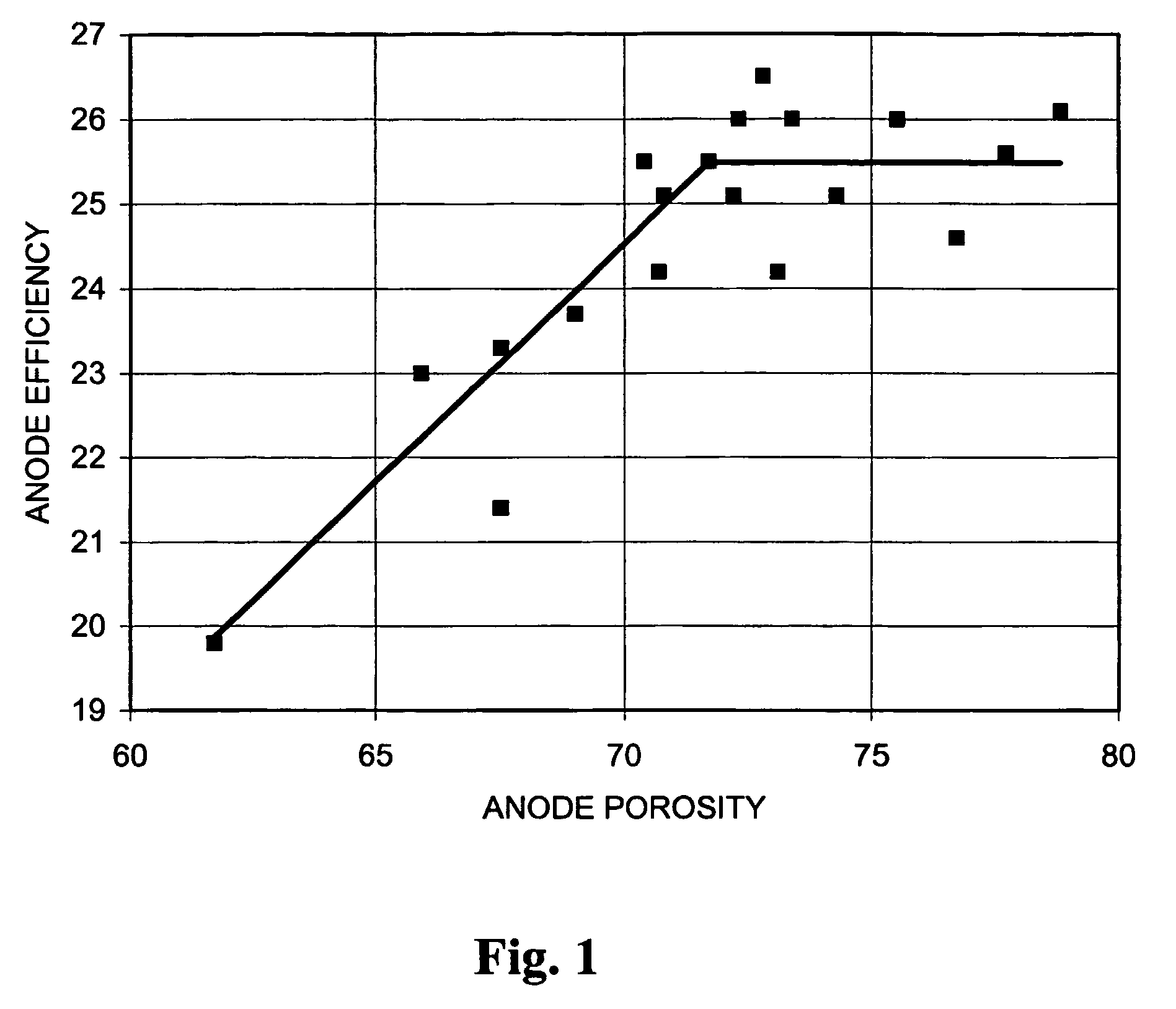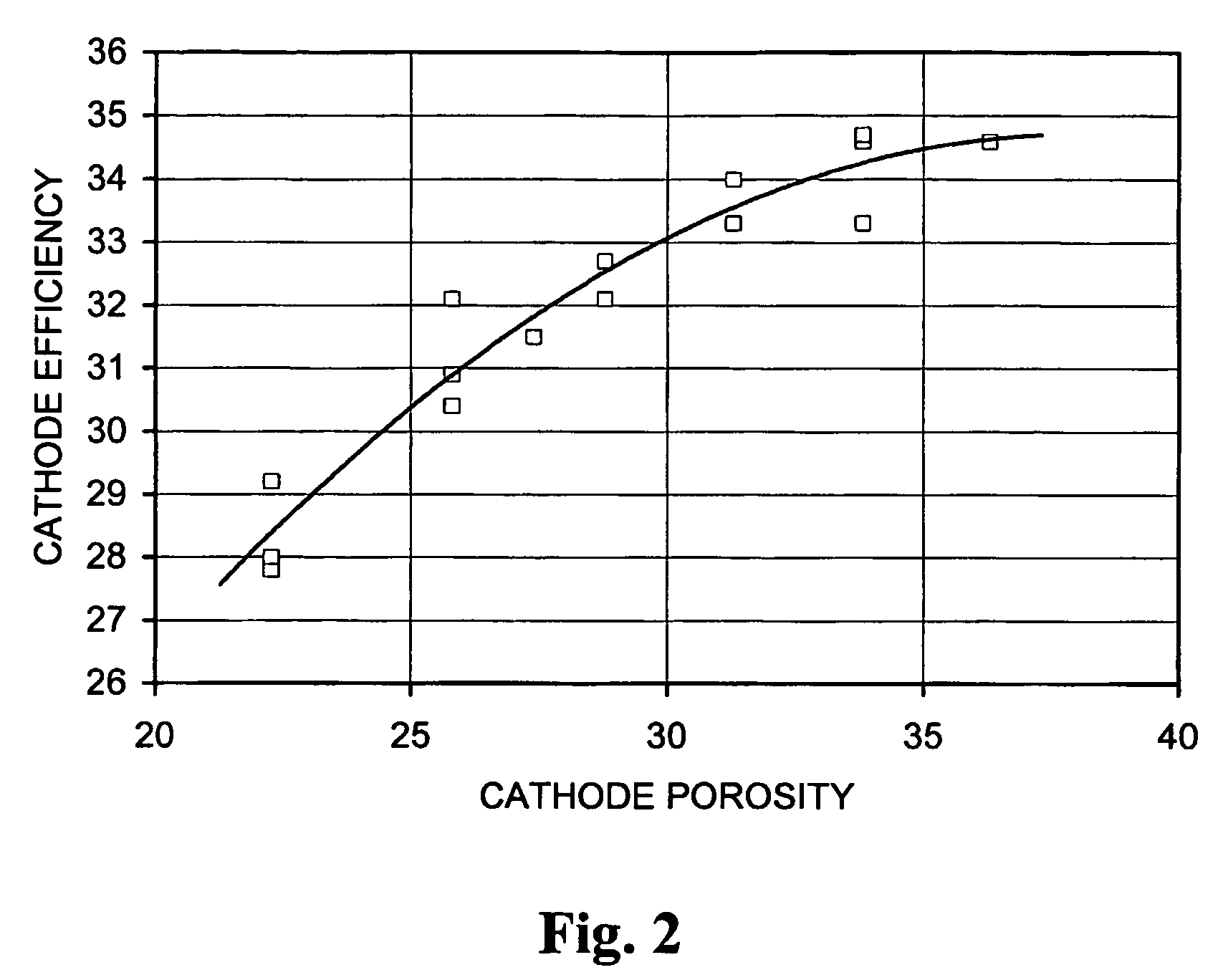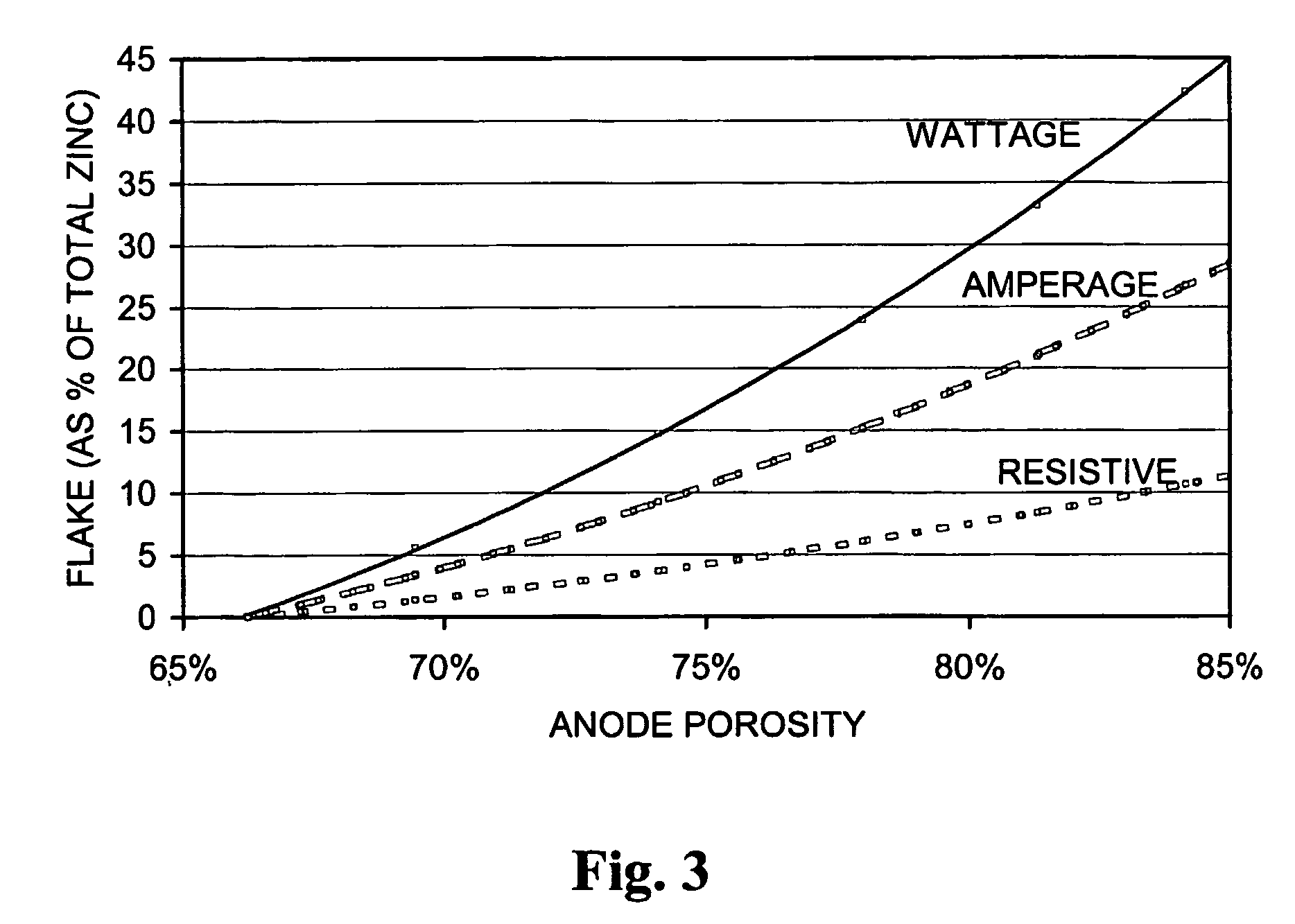Optimised alkaline electrochemical cells
a technology of alkaline electrochemical cells and alkaline electrochemicals, which is applied in the direction of primary cell electrodes, electrochemical generators, cell components, etc., can solve the problems of limiting the maximum amount of ingredients which can be put into any given cell, increasing the volume, and reducing so as to reduce the quantity of active materials and improve the performance. , the effect of small volum
- Summary
- Abstract
- Description
- Claims
- Application Information
AI Technical Summary
Benefits of technology
Problems solved by technology
Method used
Image
Examples
example 1
[0193]Table 2 summarises key cell features as well as the discharge duration in minutes on the 1 A cont. test to 1.0 V (in column “1A”).
[0194]
TABLE 2CathodeInitialAnodePorosityIDKOHFlakePorosityCathodeAnode(%)AhEMD:C(mm)(wt %)Separator(wt %)(%)1AEff %Eff %>272.6–2.970–7628.82.9308.85381 × VLZ / AA:SS370.75632.024.031.32.8268.85401 × VLZ / AA:SS572.25633.325.131.32.7239.05402 × VLZ105571.75534.325.831.32.7239.05401 × VLZ / AA:SS874.35433.725.333.82.7238.85402 × VLZ105370.35534.525.933.82.7238.58401 × VLZ / AA:SS773.45635.126.433.82.6239.05412 × VLZ105672.85535.826.933.82.6239.05411 × VLZ / AA:SS1075.55435.226.436.32.7208.58401 × VLZ / AA:SS572.25434.025.5>272.4–2.6>7628.82.6269.40401 × VLZ / AA:SS1276.75132.724.631.32.5269.40411 × VLZ / AA:SS1377.75134.025.633.82.4238.85421 × VLZ / AA:SS1578.85034.726.12.6–2.970–7625.82.9309.05401 × VLZ / AA:SS572.25330.522.922.32.8269.40391 × VLZ / AA:SS1075.34929.221.925.82.8209.05391 × VLZ / AA:SS673.05231.023.325.82.7209.40401 × VLZ / AA:SS1377.25232.124.126.92.8269.16401...
example 2
[0201]Table 3 to illustrates the effect of increasing the level of zinc flake. The data from the first region in Table 2 is repeated in the second region of Table 3 for ease of comparison.
[0202]
TABLE 3CathodeInitialAnodePoros.KOHFlakePorosityCathAnode(%)AhEMD:CID(wt %)Separator(wt %)(%)1AEff %Eff %>272.6–2.970–7628.82.9308.85381 × VLZ / AA:SS570.75933.7%25.3%32.62.9258.65391 × VLZ / AA:SS570.75934.4%25.9%33.82.8238.58391 × VLZ / AA:SS570.36035.8%26.9%33.82.8238.58391 × VLZ / AA:SS870.35935.2%26.5%36.32.7208.58401 × VLZ / AA:SS871.85836.5%27.4%>272.6–2.970–7628.82.9308.85381 × VLZ / AA:SS370.75632.024.031.32.8268.85401 × VLZ / AA:SS572.25633.325.131.32.7239.05402 × VLZ105571.75534.325.831.32.7239.05401 × VLZ / AA:SS874.35433.725.333.82.7238.85402 × VLZ105370.35534.525.933.82.7238.58401 × VLZ / AA:SS773.45635.126.433.82.6239.05412 × VLZ105672.85535.826.933.82.6239.05411 × VLZ / AA:SS1075.55435.226.436.32.7208.58401 × VLZ / AA:SS572.25434.025.5
[0203]Table 3 shows that increasing the flake level slightly ser...
example 3
[0204]Accompanying FIG. 1 illustrates the effect of anode porosity on anode efficiency on 1 Amp continuous discharge to 1.0 V (cathode porosity above 28%), while FIG. 2 illustrates the effect of cathode porosity on cathode efficiency on 1 Amp continuous discharge to 1.0 V (anode porosity about 70–71%). It can clearly be seen that anode efficiency plateaus substantially at an anode porosity of around 71%. Cathode efficiency continues to rise above 28% but, as illustrated above, is counteracted by loss in capacity.
PUM
 Login to View More
Login to View More Abstract
Description
Claims
Application Information
 Login to View More
Login to View More - R&D
- Intellectual Property
- Life Sciences
- Materials
- Tech Scout
- Unparalleled Data Quality
- Higher Quality Content
- 60% Fewer Hallucinations
Browse by: Latest US Patents, China's latest patents, Technical Efficacy Thesaurus, Application Domain, Technology Topic, Popular Technical Reports.
© 2025 PatSnap. All rights reserved.Legal|Privacy policy|Modern Slavery Act Transparency Statement|Sitemap|About US| Contact US: help@patsnap.com



